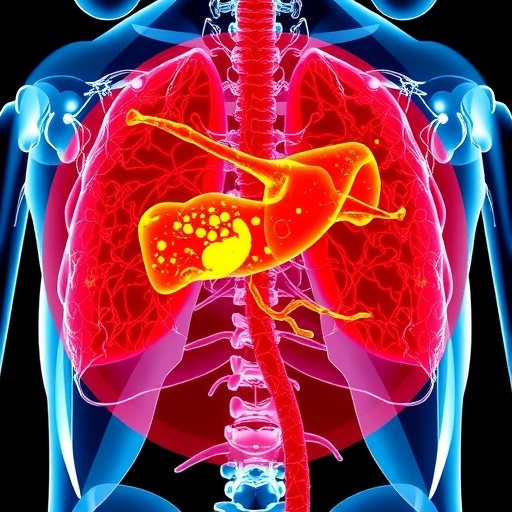In a groundbreaking study that promises to revolutionize the field of medical diagnostics, researchers have unveiled XAIHO, a hybrid optimized framework leveraging explainable artificial intelligence (XAI) for the detection of liver cirrhosis. This innovative approach is poised to enhance diagnostic accuracy and transparency in an area of healthcare that has traditionally relied heavily on subjective interpretations of diagnostic imaging and clinical data. The implications of this work could extend beyond liver cirrhosis, setting a new standard for AI applications in various medical fields.
For many years, liver cirrhosis has posed significant challenges to healthcare professionals worldwide. This progressive disease, commonly resulting from chronic liver diseases such as hepatitis and fatty liver, leads to the irreversible scarring of the liver. The effects of cirrhosis can range from subtle changes to life-threatening complications, necessitating early detection and management. However, the complexity of liver pathology and variability in patient presentations make diagnosis difficult. The new tools provided by XAIHO may finally offer a solution to this daunting problem.
At the crux of XAIHO lies a unique combination of conventional machine learning algorithms integrated with advanced explanatory capabilities. This hybrid architecture allows for a more robust analysis of patient data, including imaging studies, laboratory results, and clinical histories. By employing this approach, the framework not only predicts the likelihood of liver cirrhosis but also offers insights into the underlying reasons for its predictions. This transparency is crucial as it enhances trust among healthcare professionals when they interpret AI-generated results, facilitating improved patient care.
The development process for XAIHO involved extensive research and testing using diverse datasets. The researchers meticulously curated a comprehensive dataset that includes a wide array of cases, capturing various stages and causes of liver cirrhosis. This rigor in data collection ensures that the model can effectively generalize across different populations and clinical scenarios. The model’s accuracy has been validated through numerous trials, providing strong evidence for its reliability in real-world clinical settings.
A pivotal aspect of the success of XAIHO is its ability to learn from both labeled and unlabeled data, thereby expanding its dataset without needing extensive human input. This self-supervised learning capability enables continual improvement of the diagnostic model, allowing it to adapt to new information and emerging patterns in liver cirrhosis presentations. By evolving alongside the latest clinical findings and guidelines, XAIHO stands as a cutting-edge tool in healthcare diagnostics.
One of the most advantageous features of the hybrid framework is its explanatory nature, which differentiates it from conventional black-box AI systems. Understanding the reasoning behind an AI model’s predictions is vital for clinicians tasked with making informed decisions about patient care. With XAIHO, healthcare providers can access clear explanations regarding how certain data points influenced the model’s outcome, promoting collaborative decision-making between technology and medical professionals.
As telemedicine continues to rise, the importance of tools like XAIHO becomes increasingly evident. Remote diagnostic capabilities are essential in reaching underserved populations who may not have immediate access to liver specialists. By incorporating this AI framework, healthcare systems can expand their reach while ensuring that diagnostic services maintain a high standard of accuracy and reliability. This approach not only facilitates timely intervention but can significantly improve patient outcomes in areas with limited healthcare access.
Moreover, XAIHO’s architecture is designed to seamlessly integrate with existing electronic health record (EHR) systems. This connectivity streamlines the diagnostic process, allowing clinicians to harness AI insights without disrupting their workflow. As healthcare continues to embrace digital transformation, solutions like XAIHO represent a critical step in ensuring that AI becomes a valuable ally in promoting health and well-being rather than a hindrance to clinical efficiency.
Collaborations between data scientists and medical professionals have been central to the success of this project. The interdisciplinary nature of the research team underscores the necessity for diverse expertise in the development of effective AI systems. It serves as a reminder that the best advancements in healthcare technology often arise from a synergistic approach, merging insights from clinical experience with technological innovation.
Looking ahead, the team behind XAIHO envisions broader applications for their technology. Given the principles that underpin the framework, it could easily be adapted for use in diagnosing other conditions that rely on complex data interpretation, such as various cancers, cardiovascular diseases, and metabolic disorders. The potential for cross-disciplinary utility ensures that XAIHO could play a considerable role in future medical advancements, fundamentally changing how practitioners approach disease detection.
Initial feedback from the medical community has been overwhelmingly positive, with many expressing enthusiasm for the potential of XAIHO to improve liver cirrhosis diagnostics. Early adopters have reported enhanced confidence in their diagnostic decisions, thanks to the model’s transparency and clarity. As more clinicians integrate XAIHO into their practice, a new era of AI-assisted medicine will continue to evolve, providing a wealth of opportunities for improved patient care.
However, with any new technology, there are challenges to overcome. The deployment of AI systems in healthcare raises ethical concerns about data privacy, bias, and the importance of maintaining the human touch in patient care. Addressing these concerns proactively is crucial to ensuring the successful integration of AI into medical practice. The developers of XAIHO commit to ongoing evaluations and community engagement to tackle these pressing issues head-on.
In conclusion, the introduction of XAIHO marks a significant advancement in the field of liver cirrhosis detection. By combining the power of advanced machine learning with explainable AI principles, this innovative framework promises to enhance diagnostic accuracy, foster trust in AI-assisted diagnosis, and improve patient outcomes. As the medical community continues to explore the implications of this technology, the possibilities for enhancing healthcare practice are boundless.
Subject of Research: Explainable Artificial Intelligence for Liver Cirrhosis Detection
Article Title: XAIHO: explainable AI leveraging hybrid optimized framework for liver cirrhosis detection
Article References:
Mishra, P.K., Chaurasia, B.K. & Shukla, M.M. XAIHO: explainable AI leveraging hybrid optimized framework for liver cirrhosis detection.
Discov Artif Intell 5, 206 (2025). https://doi.org/10.1007/s44163-025-00470-y
Image Credits: AI Generated
DOI: 10.1007/s44163-025-00470-y
Keywords: Liver Cirrhosis, Explainable AI, Hybrid Framework, Medical Diagnostics, Machine Learning




